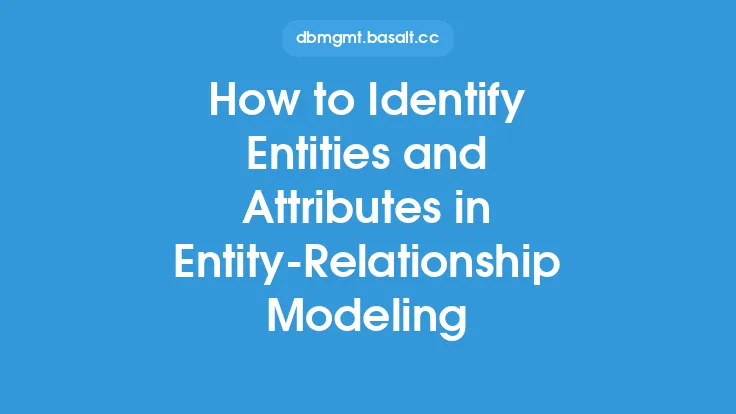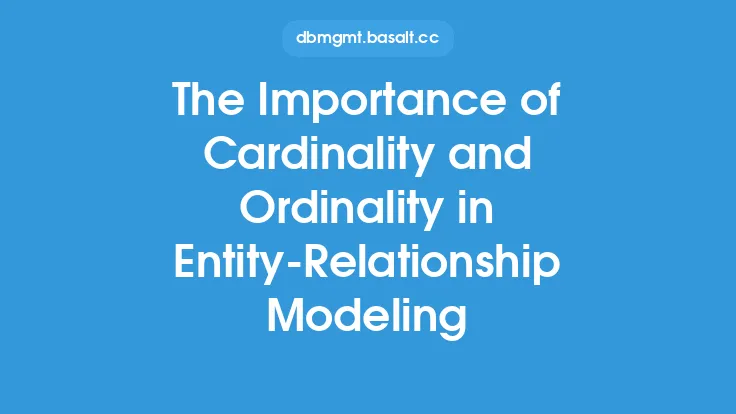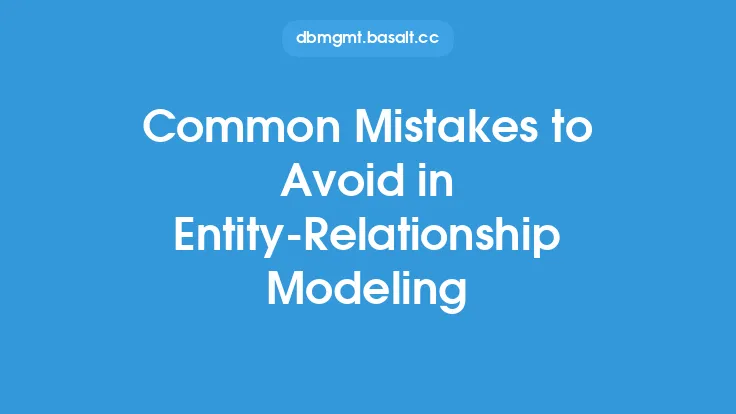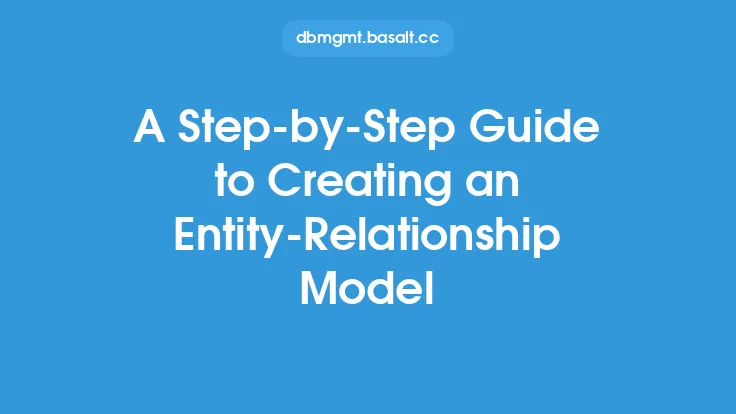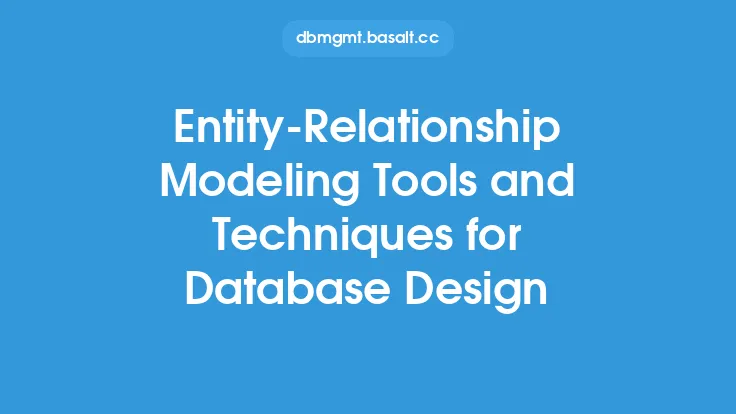Entity-Relationship Modeling (ERM) is a fundamental concept in database design that helps to create a conceptual representation of the data structure. It involves identifying entities, attributes, and relationships between them. In ERM, relationships are categorized into three main types: one-to-one, one-to-many, and many-to-many. Understanding these relationship types is crucial for designing an effective database.
Introduction to Relationship Types
In ERM, a relationship is a connection between two or more entities. The type of relationship depends on the number of instances of one entity that can be associated with the number of instances of another entity. The three main relationship types are:
- One-to-One (1:1): A single instance of one entity is associated with a single instance of another entity.
- One-to-Many (1:N): A single instance of one entity is associated with multiple instances of another entity.
- Many-to-Many (M:N): Multiple instances of one entity are associated with multiple instances of another entity.
One-to-One Relationships
A one-to-one relationship exists when a single instance of one entity is associated with a single instance of another entity. This type of relationship is less common in real-world scenarios but is essential in certain situations. For example, a person can have only one passport, and a passport is issued to only one person. In a database, this relationship can be represented by a single table with a unique identifier for each entity, or by two tables with a foreign key in one table that references the primary key of the other table.
One-to-Many Relationships
A one-to-many relationship exists when a single instance of one entity is associated with multiple instances of another entity. This is one of the most common relationship types in database design. For example, a customer can place multiple orders, but each order is associated with only one customer. In a database, this relationship can be represented by two tables: one for the customer entity and another for the order entity. The customer table has a primary key, and the order table has a foreign key that references the customer's primary key.
Many-to-Many Relationships
A many-to-many relationship exists when multiple instances of one entity are associated with multiple instances of another entity. This type of relationship is common in real-world scenarios but can be challenging to represent in a database. For example, a student can enroll in multiple courses, and a course can have multiple students enrolled. In a database, this relationship can be represented by three tables: one for the student entity, one for the course entity, and a third table that acts as a bridge between the two, often called a junction table or a many-to-many resolution table. The junction table contains foreign keys that reference the primary keys of both the student and course tables.
Representing Relationship Types in Entity-Relationship Diagrams
Entity-Relationship Diagrams (ERDs) are a visual representation of the database structure, including entities, attributes, and relationships. In an ERD, relationship types are represented using different types of lines and symbols. A one-to-one relationship is represented by a single line between the two entities. A one-to-many relationship is represented by a line with a crow's foot symbol at the many end. A many-to-many relationship is represented by a line with crow's foot symbols at both ends.
Cardinality and Ordinality in Relationship Types
Cardinality refers to the number of instances of one entity that can be associated with the number of instances of another entity. Ordinality refers to whether the presence of one entity requires the presence of another entity. Understanding cardinality and ordinality is essential for designing an effective database. For example, in a one-to-many relationship, the cardinality is 1:N, and the ordinality is optional, meaning that a customer can exist without placing an order.
Implementing Relationship Types in a Database
Implementing relationship types in a database involves creating tables and defining the relationships between them using foreign keys. The choice of database management system (DBMS) can affect how relationship types are implemented. For example, some DBMSs support the creation of foreign keys with cascade delete or update options, which can simplify the maintenance of relationships.
Conclusion
In conclusion, understanding the different relationship types in Entity-Relationship Modeling is crucial for designing an effective database. One-to-one, one-to-many, and many-to-many relationships are the three main types of relationships, each with its own characteristics and challenges. By representing these relationship types in Entity-Relationship Diagrams and implementing them in a database, database designers can create a robust and scalable database that meets the needs of the application.
